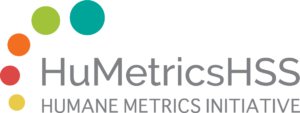The Mesoamerican Clay-Figurine Project arouse out of a need to contest trauma and violence in the classroom though self-reflective writing, storytelling, and clay-work. The work has grown into a collective effort between Indigenous educators, scholars, families, and community practitioners from diverse Nations throughout Turtle Island. The mission centers on building sustainable relationships with all peoples through mobility and movement, critical teaching and learning, interregional interaction, and an understanding of ancestral medicine. Our thoughts and actions manifest in schools, health centers, community centers, and on the front lines defending the land.
Our project is appreciative of the support received through the 2021 HuMetricsHSS Community Fellowship. This grant assisted with the release of a newly designed website, and the relaunching of its public engagement program amid COVID-19 reparations during the 2022, and early 2023 academic year. The one-year of public programing includes public discussions, reading events, and symposiums centered on racial and social justice, community health and well-being, and Indigenous Educational Sovereignty. The programing, the first of its kind, is unique for bringing together all facets of society and academia together to help ease the effects of the COVID-19 pandemic.
Through engagement with this fellowship and with our current project I have become more convinced that there exists a growing need to serve community college students of color. Moreover, my thoughts are that faculty must train constantly to better serve students of all backgrounds. I believe faculty must ask their superiors, themselves, and their own colleagues the question of “how can we improve our teaching and learning?” I contemplate that faculty have become too complacent, and too comfortable. In the process our teaching has become outdated, lackluster, and ineffective in addressing contemporary problems.
Over the course of this project, I got to understand that having partners in the institution will improve opportunities. For example, having people working on behalf of the project goals will move things along further. Resources shall come in quicker, work orders shall be fulfilled sooner, and consultant checks shall be cut in a timely manner. I also came to understand that while opportunities do present themselves through diligence and hard work, barriers are systemically interwoven into the fabric of the institution. For example, hierarchies and chain of command culture serve well to disrupt transparency and accountability. I recall more than once, mistakes occurred, only for these to be cited as unfortunate circumstances, and a part of doing business. Institutional barriers can be avoided by simply meeting in person, as opposed to an email exchange conducted over lengthy periods.
